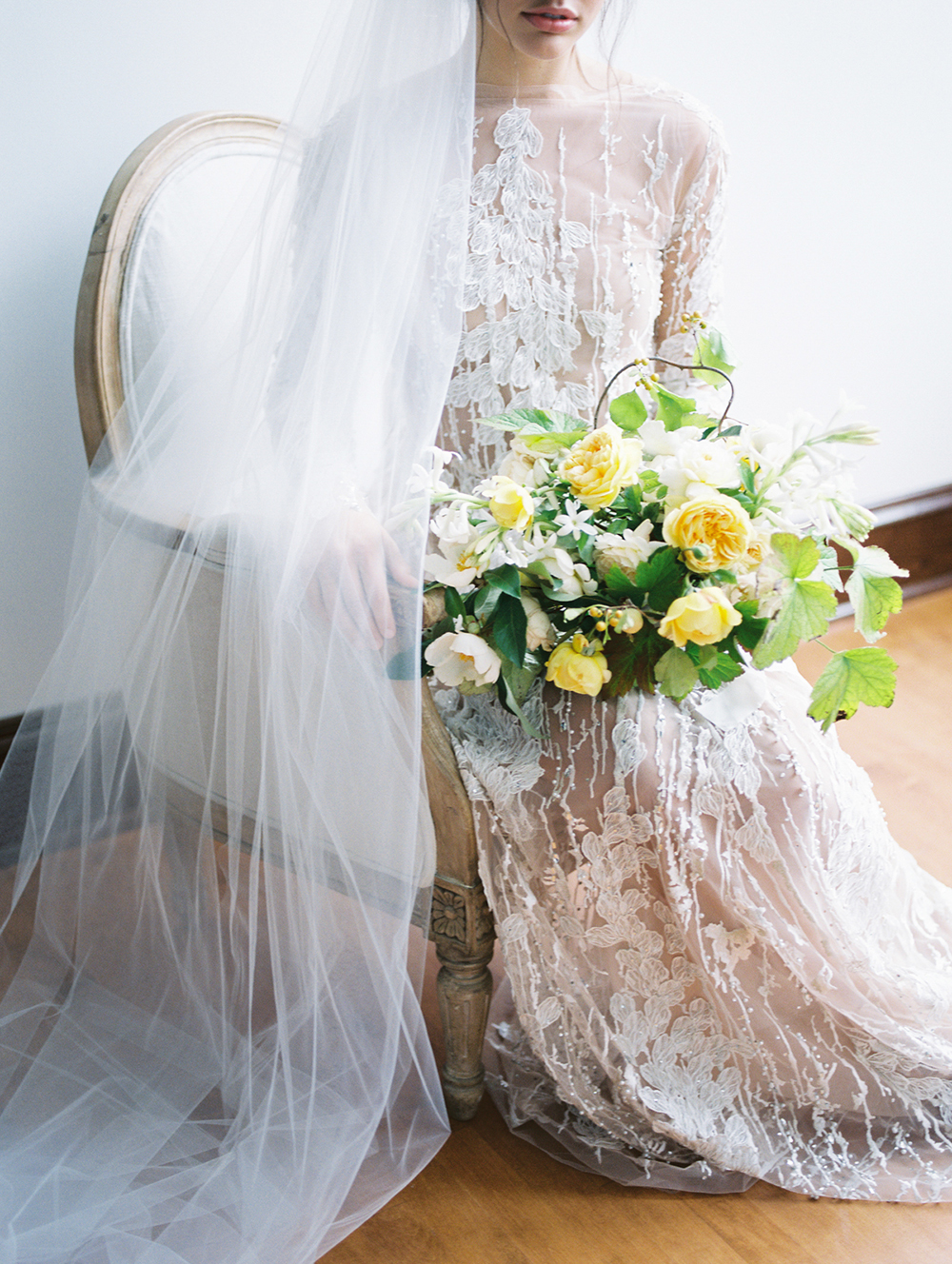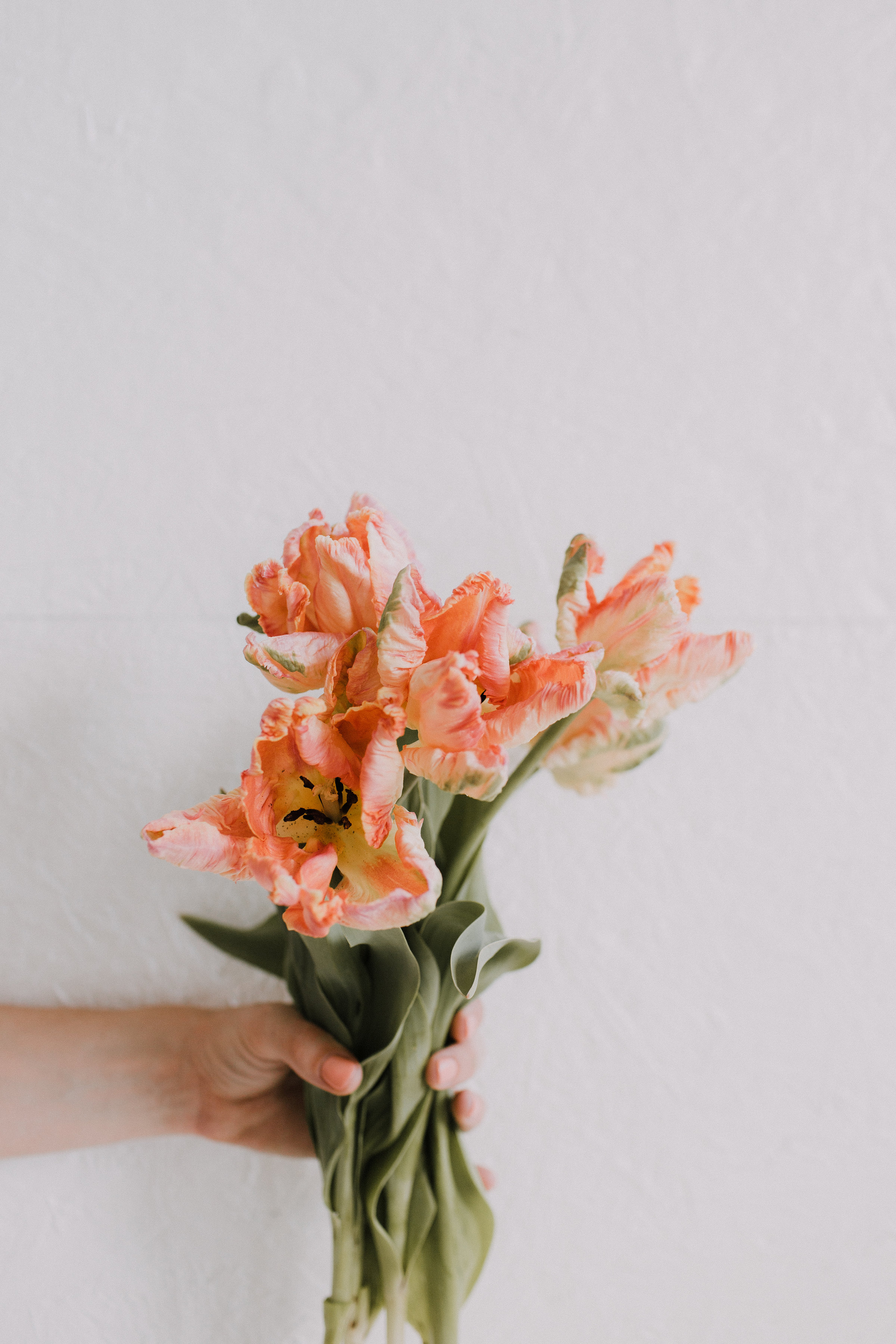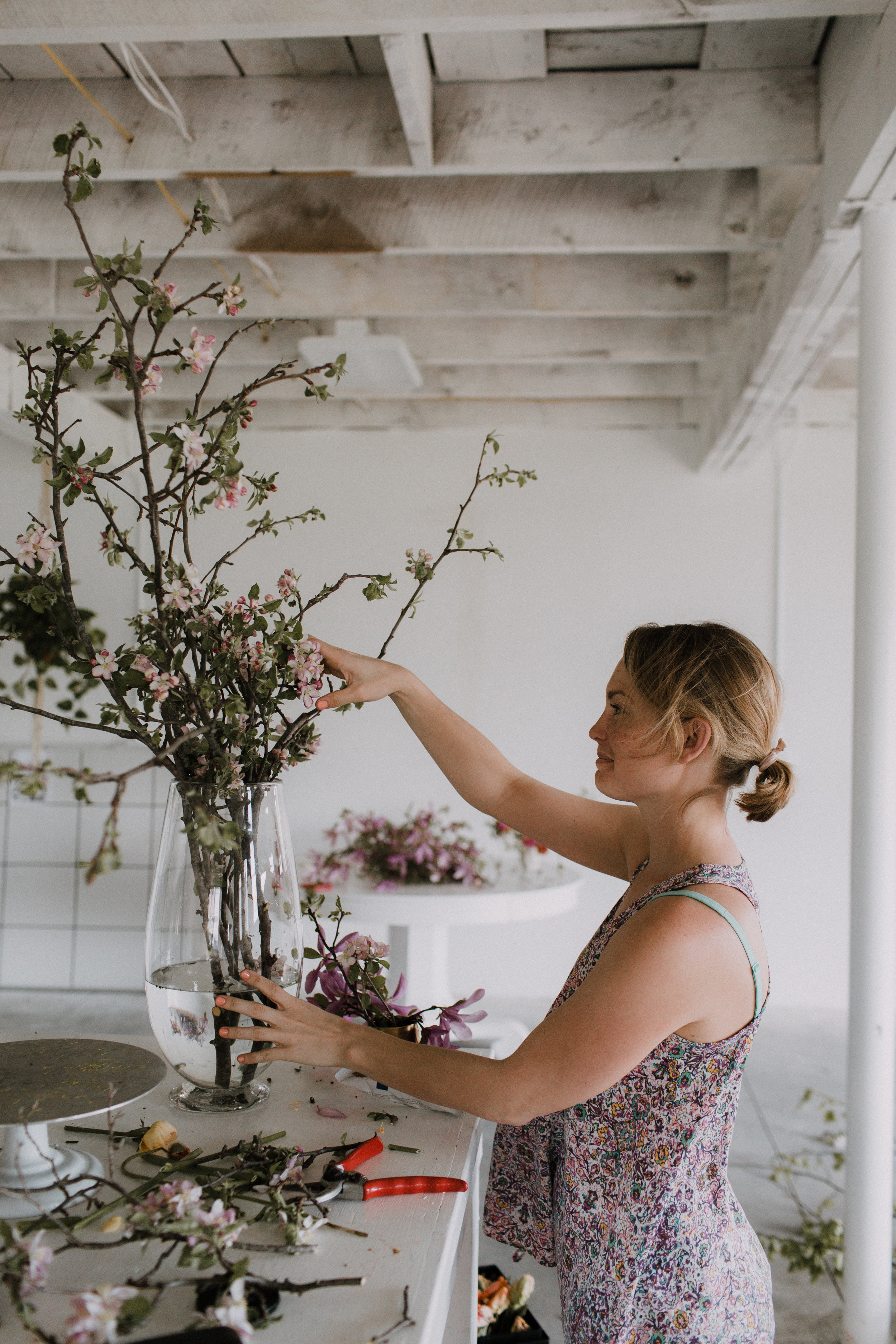As seen on Grey Likes
Planning and Design by East Made Event Co.
Dress Emily Riggs Bridal
Photography by Jeremy Chou
Spring Sunrise at the Jefferson Memorial
Botanical Journal: Dogwood
Botanical Name: Cornus
Blooms Locally: Mid-Late April
"After all, I don’t see why I am always asking for private, individual, selfish miracles when every year there are miracles like white dogwood." – Anne Morrow Lindbergh
Since we are situated on a tree farm in Montgomery County, we have the luxury of unabated access to dogwood branches when they bloom in the spring. We are very careful to harvest the branches sustainably so that we don't traumatize the tree. Here is how to properly cut tree branches:
- Make a small cut, several inches up from the "branch collar" on the underside of the branch approximately ¼ of the way through. "This prevents bark from tearing off along the underside of the branch during removal of the heavier outer portion."
- Then make a cut all of the way through the branch from the top down, removing the majority of the branch.
- Cut the remaining branch stub away from the main stem, just outside of the branch collar. Do not cut into the branch collar tissue (pictured below).
Source: http://www.extension.iastate.edu/smallfarms/proper-techniques-prune-trees-and-shrubs
We used dogwood blossoms in just about every wedding this spring. The delicate, 4 pronged flowers add beautiful lines to any floral arrangement large or small. We used long, arching pink branches for statement pieces in one of our April weddings and complimented the large arrangements by featuring the flowers in satellite arrangements as well. We are already missing these gorgeous, fragrant blooms as blossoming branch season gives way to a summer full of flowers!
Photos by Becca Olcott
Botanical Journal: Tulip
Botanical Name: Tulipa
Blooms Locally: Mid-Lat April
Flower Meaning: Depends on the color; red symbolizes true love, purple represents loyalty, white tulips say "I'm Sorry"
Last fall, we planted a few rare varieties of tulips with great anticipation for what we would harvest in the spring. With an early warm streak, we began to see green sprouts much earlier than anticipated, and we worried that we wouldn't get to use our precious tulips in our spring bouquets like we had planned. Luckily, Mother Nature found her balance and we harvested breathtaking Salmon Parrot Tulips (pictured below) in time to feature them in a few event arrangements last month. We also grew Professor Rontgen and Charming Beauty Tulips and completely fell in love. We were so impressed with the ease of growing these beauties that we are already stocking up on tulip bulbs for next year!
Have you ever heard of "Tulip Mania"? It was an economic crash that occurred in the 1600s, caused by a sudden surge in demand for...tulip bulbs. In 1593, Turkey introduced the Dutch to tulips. The Dutch went wild for tulips, and the bulbs were widely sought after for a premium price. A viral genetic alteration emerged, causing vibrant streaks of colors on tulip petals, which increased their value tenfold. Gardeners began seeking certain viral strains for their gardens, and the rarity of these strains coupled with bulb buyers scooping up as many bulbs as possible to capitalize on the bubble, initiated a twenty-fold increase in value! People were trading land, even their homes, for tulip bulbs. By 1636, tradesmen, were indulging in frantic trading of the bulbs - think wall street of tulip bulbs - with some bulbs changing hands up to 10 times during in a single day. Needless to say, this resulted in one of the largest market collapses in modern history. By 1637, speculators could no longer afford to buy the bulbs, demand plummeted along with the price of tulip bulbs, leaving many to suffer from the resulting economic depression upon realizing that they had traded their homes for garden fodder.
We love using tulips in our arrangements. Their symmetrical petals, bold colors and gorgeous shape uniquely enhance bouquets and arrangements. What are your favorite tulip varieties?
Botanical Journal: Apple Blossom
Botanical Name: Malus pumila
Blooms Locally: Mid-Late April, Early May
Flower Meaning: "Heady Love, Peace, Sensuality, and Fertility"
One of the most cultivated fruit trees in the world, apple trees originated in Central Asia and were brought to America by early European settlers. Apple trees are now a staple of the American landscape and their fruit is a staple of the American diet. These trees thrive here in Maryland, and while the fall harvest is often a ubiquitous time for these trees, we are particularly found of their spring blossoms. They typically bloom in shades of pale pink to white. In order to successfully pollinate apple trees, you must plant at least two trees of different varieties in close proximity that flower at the same time.
Apple blossoms (and trees) were honored by the ancient Celts as a symbol of love, and they would adorn their bedrooms with these blossoms to entice a romantic evening. The apple blossom is also symbolic of long life, and "it stands for the concept of life continuing, even after we endure a 'death' during the winter of our lives."
We love using these blossoms in spring arrangements. Their 5-petal blooms grow in gorgeous clusters on the the large, arching branches and their subtle pink tone is a lovely accent in any setting. Do you have an apple tree in your yard? Have you ever used apple blossom cuttings in an arrangement?






































